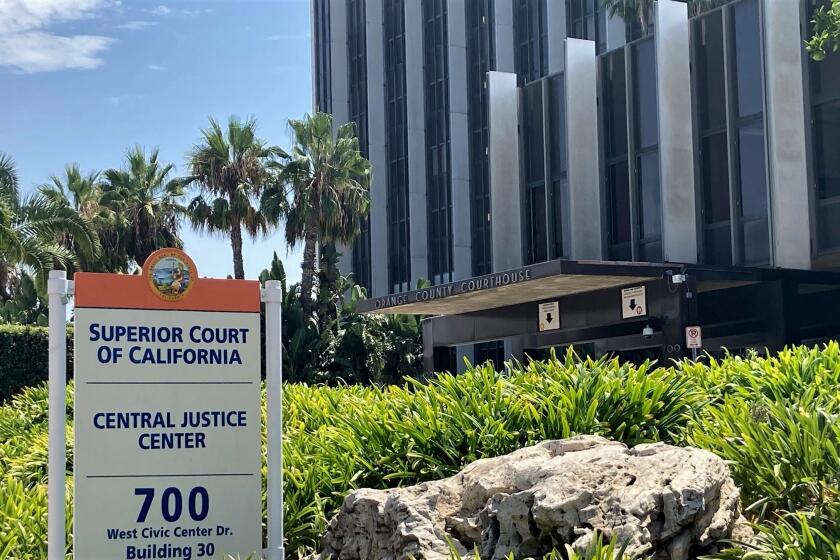Bass on the comeback trail
- Share via
The white sea bass is not a gorgeous fish. It isn’t really white, and
it doesn’t look very friendly. It is given to skulking in shady spaces
and has a somewhat sullen temperament.
But when John Lauritzen talks about white sea bass, he does so with an
affectionate tone. That’s because he’s the father figure for thousands of
the fish that are held in a barge in Newport Harbor.
It’s a facility belonging to the Pacific Fisheries Enhancement
Foundation, an organization affiliated with the Balboa Angling Club
that’s working to repopulate the ocean with the once-scarce bass. Their
effort, anglers say, is starting to make real improvements on the bass
scene.
On the barge on a recent afternoon, Lauritzen dipped a mesh scoop into
one of four large fiberglass holding tanks, thrusting it deep into the
murky corners where his charges like to congregate.
A moment later, he came up with a scoop of thrashing bass, a handful
of about 1,200 that are currently being raised on the facility.
“We raise them from smelt,” said the 32-year-old volunteer director of
the foundation, who works on computer network security for a living. The
process of allowing the fish to grow large enough to release into the
wild can take anywhere from five to more than eight months, he said,
depending on water conditions.
When they’re old enough to survive on their own, the fish are dumped
into the wild: free to swim about blissfully or find their way onto the
gleaming point of an angler’s hook, as the case may be.
Lauritzen can’t control the fate of his fish; he can only raise them
right and send them out into the world.
There are 10 bass-raising barges on the California coast south of
Point Conception, part of a project called Ocean Resources Enhancement
and Hatchery Program. The 18-year-old program combines state funding with
volunteer efforts like Lauritzen’s to boost the bass population. All
together, the statewide project puts about 100,000 fish into the water
annually.
And it seems to be making a difference. Since the early 1980s, when
white sea bass had been overfished to such a degree that they had become
a scarce catch, they have gradually returned to a prominent place on the
angling radar.
John Doughty, who runs J.D.’s Big Game Tackle in Newport Beach, says
that in recent years he’s seen a definite improvement in bass catches.
“It’s a combination of that [program] and the reduction of the gill
net fishing along the coastline that’s really allowed the coastal waters
all the way from Santa Barbara to the Mexican border to improve,” he
said.
And in years ahead, as many of the released bass finally grow large
enough to be legal catches, he expects things to get even better.
As for Lauritzen, he raises the fish but doesn’t really enjoy eating
them. It’s tough to go from the position of a caring father to that of
the chomping seafood diner.
“It would be kind of like eating your hamsters,” he said.
All the latest on Orange County from Orange County.
Get our free TimesOC newsletter.
You may occasionally receive promotional content from the Daily Pilot.






